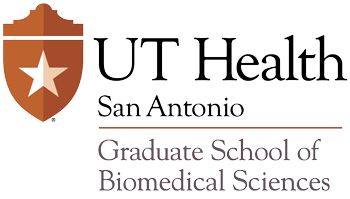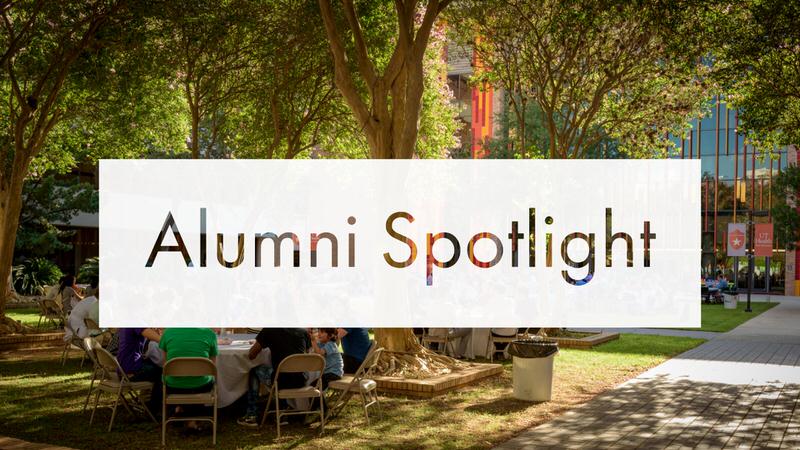Alumni Spotlight: Dr. Shelly Lane, Professor and Discipline Lead in the School of Health Sciences, Discipline of Occupational Therapy at the University of Newcastle
 1) When did you first become interested in science?
1) When did you first become interested in science?
In high school; I had an amazing biology teacher. He was knowledgeable and an entertaining teacher. I knew I was headed for something related to science.
2) Why did you pick The University of Texas Health Science Center at San Antonio and your program?
It was a decision of convenience to be honest. My partner and I had moved to San Antonio for his job. I looked at a few options for graduate school, and UT Health San Antonio had the most to offer. I chose Anatomy because I found it more pertinent to my career goals.
3) Tell me more about your career path.
Different from many I suspect. I had wanted to be an occupational therapist throughout high school. My brother had seen an occupational therapist while growing up and I loved what the occupational therapist helped him do. After getting my B.S. in occupational therapy, I worked clinically for four years with an amazing mentor who changed the course of my life. She pushed me to look into the neuroscience that supported clinical practice, engaged me in study groups working to link neuroscience and practice, and had me do some lecturing to colleagues. I would never have thought I could teach; I am a strong introvert. Working with her during this time convinced me that I needed to learn more than I could in small study groups and on my own, that I liked research, and that I could teach. And that learning something well enough to teach it meant really understanding it.
I applied to enter as a M.S. student in the Department of Anatomy and Cell Biology now called Cell Systems and Anatomy at UT Health San Antonio, and after a year transferred into a Ph.D. track. The jump from a clinical B.S. degree to a science-based doctoral degree was challenging to say the least. However, thanks to the guidance and mentorship of Dr. Bill Morgan I made it through, and went on to do a postdoc at UCLA Neuropsychiatric Institute. My plan was to use this as a link between basic science research and clinically based research, and eventually return to working in the field of occupational therapy.
I married during my post-doc and my husband and I spent the next 10 years taking turns on whose job was primary and who was the follower. I knew I wanted to stay in academia. Our nomadic travels took us first to Alabama, where I had a joint clinical and academic role in occupational therapy at the Sparks Center and the University of Alabama, Birmingham, and moved from there to a fulltime academic position in occupational therapy at the University of Edmonton, Alberta, Canada for two years. Needing to
 move again, we decided to join the faculty at the University of Buffalo. We were in Buffalo for six years, a long stint for us. At each location I was faculty, teaching and doing research. My teaching focus was always pediatric occupational therapy and neuroscience, and my research focus was on understanding and characterizing deficits in sensory integration and processing in children with diverse backgrounds and concerns.
move again, we decided to join the faculty at the University of Buffalo. We were in Buffalo for six years, a long stint for us. At each location I was faculty, teaching and doing research. My teaching focus was always pediatric occupational therapy and neuroscience, and my research focus was on understanding and characterizing deficits in sensory integration and processing in children with diverse backgrounds and concerns.
Leaving Buffalo we moved to Virginia Commonwealth University where I assumed the role of Chair of Occupational Therapy role for 13 years. In this role I spearheaded many programmatic changes and enjoyed these challenges. I also served on the institutional review board for eight years, some of this as Assistant Chair. I found it challenging to do research and administration, leading me to step out of the role of chair and into a faculty role with more limited administrative responsibilities. I founded the Sensory Processing and Stress Evaluation Lab at Virginia Commonwealth University with an endowment from a grateful donor. I also served as co-developer of a blended learning, interdisciplinary doctoral degree, a program in which I taught for many years. In my time at Virginia Commonwealth University, I also had the pleasure of mentoring several doctoral students. I took on a part-time role as Assistant Dean for Research but again found the administrative responsibilities took me from my research. While in Buffalo we had two children, and found the nomadic life difficult to lead. We stayed in Richmond, VA for nearly 20 years. With the kids grown and on their own we sought another adventure.
My current role is Professor and Discipline Lead in the School of Health Sciences, Discipline of Occupational Therapy at the University of Newcastle, in Newcastle, Australia. I continue to teach, although no longer neuroscience as that is covered here by another department. I do teach pediatrics however. I also get to mentor doctoral and masters students and work collaboratively with many other professionals. Throughout my career I have had the opportunity to travel broadly, working widely with children with a variety of disabilities, and teaching neuroscience applications in occupational therapy and neuroscience as a foundation for understanding sensory integration. I have traveled professionally to Canada, many regions of the UK, Spain, China, Japan, India, Russia, Columbia, Peru, South Africa, West Africa, New Zealand, and of course Australia. I continue to do this still, with a trip planned to Brazil and back to Spain in early 2018. This allows me to keep touch with clinicians and learn about occupational therapy around the globe.
4) Tell me about your current career, what do you do?
Routine academic tasks. A bit more mentoring here than I found possible in the USA. I currently am working with students, or graduates, from Australia, Singapore, Ireland, Canada, and the USA to enter graduate school, complete their studies, and/or write up their work. I also have the opportunity to mentor young academics into the challenging role, balancing research, teaching, and service.
5) What is a day like in your job?
My job is in academia; I teach, go to committee meetings, work with honors and graduate students, write, and do research. My days are full! Periodically I still work clinically with children, which adds a new flare to the day.
6) How did the education you get at The University of Texas Health Science Center at San Antonio prepare you?
When I went to UT Health San Anotonio, there were very few occupational therapists pursuing an advanced degree. With my Ph.D. in hand, I had an advantage over others looking at academic positions in occupational therapy. Because of the focus of my research and education on neuroscience I became very sought after. I have relied on this knowledge-base throughout my career.
7) What is the most challenging part of your work?
Workload not surprisingly. And, getting research funding!
 8) What is the most rewarding part of your work?
8) What is the most rewarding part of your work?
I enjoy mentoring young academic staff and students, and getting them excited about and invested in research. I also like teaching, getting the students excited about working with children and understanding the links between neuroscience and practice.
9) What has been your proudest achievement?
I have made many contributions to occupational therapy and I am proud of those. I am co-editor and author on a text that is considered core in sensory integration, and co-editor on one that refocuses pediatric occupational therapy onto the child rather than on their disability or disorder. But I would have to say that I am most proud of my now adult children. I waited a long time to have a family, several years after I received my doctoral degree, and they have made the wait worthwhile. Both are now bright, engaging, and invested adults, living and loving life.
10) What would you tell a current student interested in your career? Any advice?
It was not an easy way to go; linking practice and science has become more of a catch phrase and career opportunity now than it was then (think translational science), but it was challenging to make the leap. Advice: 1) find a good mentor; I am not sure what I would have done without Dr. Bill Morgan; 2) be interested in what you do; 3) stick with it.
11) What do you like to do outside of work?
I get the best relief from the stress of the day from jogging; I don’t go fast or far, but I do enjoy it. I also do some weight lifting and body weight workouts at the gym. Other than that, I am an amateur jewelry maker, I like to cook, walk by the beach, hike, and bicycle.
11) Growing up, what did you want to be?
An occupational therapist, always
12) Who has influenced you the most in life?
My clinical mentor was Mrs Virginia Scardina. An occupational therapist working in Cincinnati, OH, Ginny was the wind behind my sails in pursuing graduate education and academia. She pioneered sensory integration in the schools, working with children with learning disabilities on the east side of the country. Ginny had a “you can do this” approach to life that guided us to believe in ourselves. I have already indicated that Dr. Bill Morgan was highly influential while I was at UT Health San Antonio. Bill never stopped believing in me, did not seem to find my questions and lack of background annoying, and helped me accomplish the huge task of obtaining my Ph.D. I could not have done this without him.
13) What do you consider your favorite hobby?
Working with beads, wire, and metal. Don’t have much time for it right now, but would love to get more into it.
 14) What is your favorite quote?
14) What is your favorite quote?
I love quotes by Einstein; here is a good one: Strive not to be a success, but rather to be of value.
15) If you could travel anywhere, where would you go?
While I have traveled many places, I would love to hike around Europe.
16) Tell us something about yourself that otherwise we wouldn’t know or guess.
I learned to scuba dive while I was working on my Ph.D. Diving is something I rarely get to do, but really enjoy. I feel at peace under water; no phones, email, people knocking on your door…. Nirvana!

